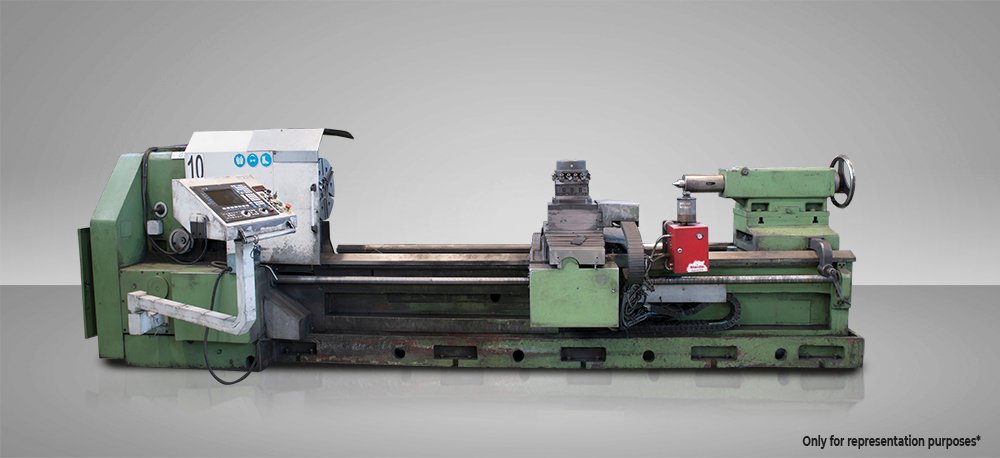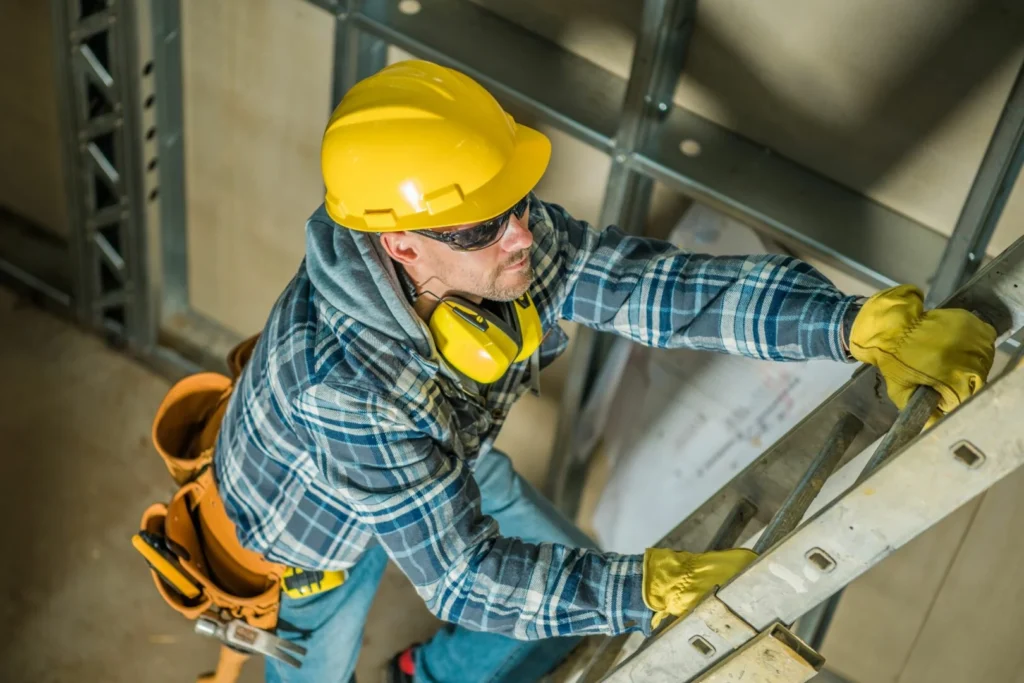
As technology advances, so do the demands on industrial equipment. Machines that were once cutting-edge can quickly become outdated, leading to inefficiencies, increased downtime, and higher maintenance costs. However, replacing machinery entirely can be prohibitively expensive for many businesses. That’s where retrofitting comes in—a cost-effective solution that upgrades your existing equipment with the latest Retrofitting automation technologies.
At GR Industrial Automation Systems, retrofitting is one of our core specialties. We’ve helped countless businesses across various industries modernize their equipment without the need for complete replacement. By upgrading your machinery with new controls, sensors, and automation systems, you can extend the life of your equipment and enhance its performanc
The Benefits of Retrofitting
- Cost Savings: Retrofitting is significantly more affordable than purchasing new machinery. By upgrading key components, you can achieve similar results at a fraction of the cost.
- Increased Productivity: Modern automation systems, like PLCs and SCADA, improve the speed and precision of your machinery, leading to higher output and better quality control.
- Enhanced Safety: Retrofitting allows for the integration of the latest safety features, ensuring that your equipment meets current standards and protects your workers.
- Reduced Downtime: By replacing outdated components with newer, more reliable technology, you can minimize unplanned downtime and keep your production line running smoothly.
Our Retrofitting Services
At GR Industrial Automation Systems, we offer a full suite of retrofitting services, including the modernization of old presses, blanking lines, and other industrial machinery. Our team of experienced engineers will assess your equipment, identify areas for improvement, and implement the necessary upgrades to optimize performance.
With our retrofitting services, you can give your machinery a new lease on life while enjoying the benefits of modern automation technology. Contact us today to learn how we can help you improve efficiency, reduce costs, and boost productivity through retrofitting.
How Machine Vision Solutions are Revolutionizing Quality Control in Manufacturing: https://grautomation.in/how-machine-vision-solutions-are-revolutionizing-quality-control-in-manufacturing/

The industrial landscape is rapidly changing, and one of the challenges most businesses will have to deal with is the need to adapt to advanced technology and at the same time treasure their old machines. Undoubtedly, the appeal for newer equipment is strong, however, due to cost, efficiency, and ecologically friendly practices, retrofitting has become a viable option for such old machines to remain in the competitive market. So what is retrofitting in avtc engine technology and what makes it different from other types of innovations within various industries? Let’s take a closer look.
What is Retrofitting?
Retrofitting means enhancing old equipment with more recent technologies and parts for the purpose of efficiency, performance, and safety enhancement. Retrofitting can reinvigorate an old system by modernizing parts of it rather than discarding the whole system by adding new automation and control systems, sensors, or energy-saving components.
In one illustration, an old CNC machine may have the latest contours added on to its existing structure. That’s precision and productivity for and on the machine without having to buy a new machine. This way, organizations get to make the best possible use of the machinery that they buy, without losing the benefits of technology.
Key Benefits of Retrofitting
1. Cost Savings
Investing in brand new machinery can be capital intensive. This is, however, not the case with retrofitting where upgrades can be made to only the necessary components thus lowering the initial costs. Moreover, retrofitting helps to reduce the rate of equipment turnover thanks to maintaining the existing equipment for longer which in turn improves the ROI.
2. Less Downtime
Initiating system replacement projects involves long periods of stopping production. Retrofitting on the other hand does not greatly interfere with production and completion is done relatively faster. Companies can also retrofit pieces and not the entire structure at a given point in time, therefore, causing minimal disruption to the normal practice.
3. Increased Efficiency and Productivity
Efficiency often tends to decline with the increase in the age of the machines. Retrofitting permits companies to the enhancement of certain aspects such as incorporating energy-efficient technologies, better systems of control, and fast processing rates without causing any increase in production costs; leading to increased productivity and reduced energy use.
4. Sustainability
From an ecological point of view, retrofitting is helpful and helps in good business practices as it helps reduce pollution. One of the effects over the years has been the generating of so many old machines which instead of stuffing margins those machines are used to retro-fitted, which cuts up heavily into the costs of manufacture and discard of bulky products.
5. Enhanced Safety and Compliance
Regulations in industries change with time and any equipment that was once used may not be appropriate for the present times in terms of safety. Retrofitting makes this possible for the safety of the employees and the machinery as such businesses can upgrade the technology available in the machine to the most current ones.
When Should You Retrofit?
There are instances when retrofitting cannot be applied or rather is not the best course of action. It is most effective in the following scenarios:
The equipment is still in good structural integrity but lacks present-day functionalities.
There is a need to improve the performance of the given machine but not by incurring the expenses of entirely replacing it.
There is a potential for improved energy efficiency or safety with the upgrading of technology.
The cost of replacing the machine would result in an unacceptable production standstill. More often than not, when the equipment has reached the end of its useful life and has become troublesome requiring repairs now and then, or the cost of retrofitting nears that of acquiring a new machine, then replacement is the preferable choice.
Retrofitting: Breathing New Life into Your Old Machinery
In today’s rapidly evolving industrial landscape, businesses often face the challenge of balancing cutting-edge technology with legacy equipment. While the allure of new machinery is tempting, retrofitting has emerged as a cost-effective, efficient, and sustainable solution to keep older machines relevant and competitive. But what exactly is retrofitting, and why is it such a game-changer for industries? Let’s dive in.
What is Retrofitting?
Retrofitting involves upgrading existing machinery with newer technologies and components to improve performance, efficiency, and safety. Instead of replacing an entire system, retrofitting can breathe new life into aging equipment by integrating modern automation, control systems, sensors, or energy-efficient features.
For instance, an older CNC machine might be retrofitted with state-of-the-art controllers, enhancing precision and productivity without the need for a full replacement. This approach helps businesses optimize the lifespan of their existing machinery while incorporating the advantages of modern technology.
Key Benefits of Retrofitting
- Cost Savings
Purchasing brand-new machinery can require a significant capital investment. Retrofitting offers a more budget-friendly alternative by upgrading only the necessary components, resulting in lower upfront costs. Plus, by extending the lifespan of your equipment, retrofitting minimizes the need for frequent replacements, maximizing your return on investment (ROI). - Minimized Downtime
Replacing an entire system often requires halting production for a significant amount of time. In contrast, retrofitting is generally faster and less disruptive, allowing you to keep your operations running smoothly. Businesses can also retrofit in stages, reducing the impact on day-to-day operations. - Increased Efficiency and Productivity
As machines age, they often become less efficient. Retrofitting allows companies to introduce new features, such as energy-saving technology, improved control systems, and faster processing speeds, resulting in higher productivity and lower energy consumption. - Sustainability
Retrofitting aligns with environmentally conscious business practices by reducing waste and promoting sustainability. Instead of scrapping old machines, retrofitting repurposes them, decreasing the environmental impact associated with manufacturing and disposing of large industrial equipment. - Improved Safety and Compliance
Industrial standards evolve over time, and older equipment may not meet current safety regulations. By retrofitting, businesses can ensure that their machinery complies with the latest safety standards, protecting both workers and operations.
When Should You Retrofit?

Retrofitting is not always the right choice for every situation. It is most beneficial when:
- Your machinery is still structurally sound but lacks modern functionalities.
- You want to enhance machine performance without the high cost of a full replacement.
- Upgrading technology can significantly improve energy efficiency or safety.
- The downtime required for a full replacement would negatively impact production.
However, if your equipment is nearing the end of its operational life, requires frequent repairs, or the cost of retrofitting approaches that of a new machine, replacement may be the better option.
Popular Retrofitting Solutions
Automation And Control Systems
Retrofitting older machines with modern automation systems can enhance accuracy, minimize human error, and upgrade overall production capacity.
Energy Efficiency Upgrades
Retrofitting components like motors, drives, or energy management systems can improve the energy efficiency of aging machines reducing their running costs and impact on the environment.
Safety Improvements
Modernizing older machines by installing features such as light curtains, sophisticated sensors, or contemporary emergency shut-off systems ensures compliance with modern safety regulations.
Digitalization and Fourth Industrial Revolution
Older systems have limitation in operational capabilities such as data collection and monitoring that can be incorporated by loading or integrating IoT devices. These devices allow predictive maintenance and remote troubleshooting for instance, just in time, data availability can be used by the companies to make operational improvements.
Other Retrofitting Technology https://www.cgglobal.com/technology_rnd
Conclusion: Embracing the Future Today: Incorporating Retrofitting
Retrofitting enables companies to meet contemporary expectations without exorbitantly replacing their equipment. Due to the advantages such as enhancing performance, safety, and preserving the environment, retrofitting is clearly the option for businesses seeking to thrive in the highly industrialized and ever changing market. From enhancing automation and improving energy systems to meeting regulations, retrofitting helps in reinvigorating old machines and promoting a modern outlook towards work.





